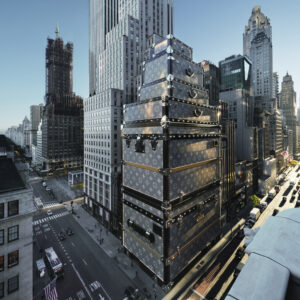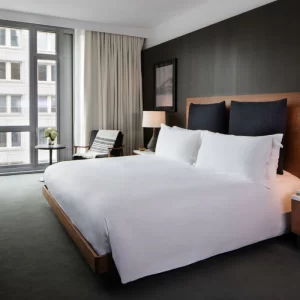A roof covered with plants. What should you know about green roofs? What plants and windows to choose?By Angelica Malin
A green roof is a structure that is worth investing in when building a house. Roofs covered with plants have a good influence on both the inhabitants and the landscape. What are the characteristics and advantages of green roofs?
Plant-covered roof ‒ tradition or innovation?
A roof covered with vegetation, which is associated with ecological and modern solutions, has quite a long tradition. Green roofs have been present in Scandinavia for many years. Today’s roofs of this kind are made in a slightly different way, but both the traditional and modern vegetation coverings provide very good insulation.
Green roofs are currently made for flat roofs and sloping roofs up to 35 per cent pitch. They consist of many layers, which guarantee the durability of the covering, i.e.:
- a waterproofing layer,
- a thermal insulation layer
- an anti-root barrier layer made of PVC foil or non-woven protective fabric,
- a drainage layer
- a filtering layer,
- a vegetation layer.
In green roofs among vegetation it is also worth to find a place for windows, which will illuminate the interiors under the roofing. Roof window manufacturers meet such needs of investors. Many window manufacturers, e.g. Fakro (https://www.fakro.co.uk/), offer glazing which can be installed on flat roofs, and thus on surfaces with plants. There are also windows specially designed for installation in green roofs, which makes them perfectly suited to their unusual requirements.
Why choose a green roof?
Green roofs are gaining in popularity and are increasingly chosen by investors who opt for ecological solutions. One of the reasons is that a roof covered with vegetation helps save water. 50 per cent of the rainwater is absorbed by the plants on the roof, reducing the amount discharged into the sewage system. With turf and flowers on the roof, you get an additional green area on your property, which significantly improves the appearance of the landscape in the city. A green roof is also a friendly space for flora and fauna, e.g. pollinating insects, which as a result of the environmental transformation have fewer and fewer places to live and pollinate.
Green roofs with lush vegetation increase the visual appeal of a house. Vegetation on the roofs of buildings looks particularly good in cities, where residents often suffer from a shortage of greenery. Green roofs are also an excellent solution for dealing with hot weather, which particularly affects people living in the attic. Vegetation on the roof directly influences the microclimate in the rooms underneath. It makes the temperature in these interiors several degrees lower, and the air humidity is at the right level. Just like potted flowers at home, plants on the roof clean the air of pollution.
Another important issue, for which investors choose green roofs, is the high thermal insulation parameters of this type of covering. Thanks to vegetation on the roof, the building warms up more slowly in the summer and cools down more slowly in the winter. Resistance to damage, wind resistance, good acoustic insulation and fire safety of green roofs are also invaluable.
Which plants to choose for a green roof?
Depending on the function of the green roof, we can choose different types of vegetation. Amongst green roofs, the following can be distinguished:
- extensive roofs ‒ their role is primarily to decorate the building. Plants with low requirements are usually chosen for this type of green roofs, in order to limit our interference and maintenance to a minimum. Such plants should practically be able to maintain themselves. They are often plants that thrive in a particular climate. The soil layer on extensive roof types is shallow, so succulents, sedums, sempervivums, mosses, fescues are good choices in this case. To attract pollinating insects, sow thyme or carnations;
- intensive roofs ‒ these are created for recreational purposes. The soil layer is thicker on them, so you can choose more diverse vegetation. The intensive type of roof also allows for cultivation of more demanding plants, including lawn. Noteworthy are coniferous shrubs (dwarf pine, yew, juniper), deciduous shrubs (ivy, ground cover rose, creeping myrtle) and perennials (bluebells, cornflowers, carnations, pasque flowers, sage, yarrow).








